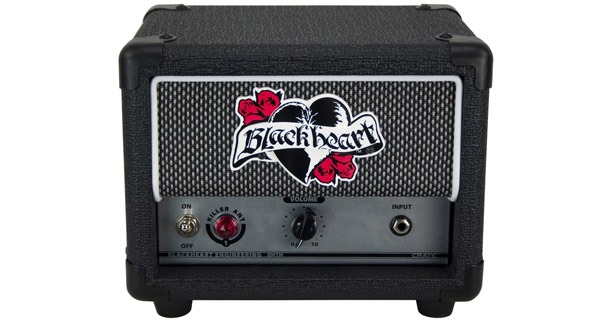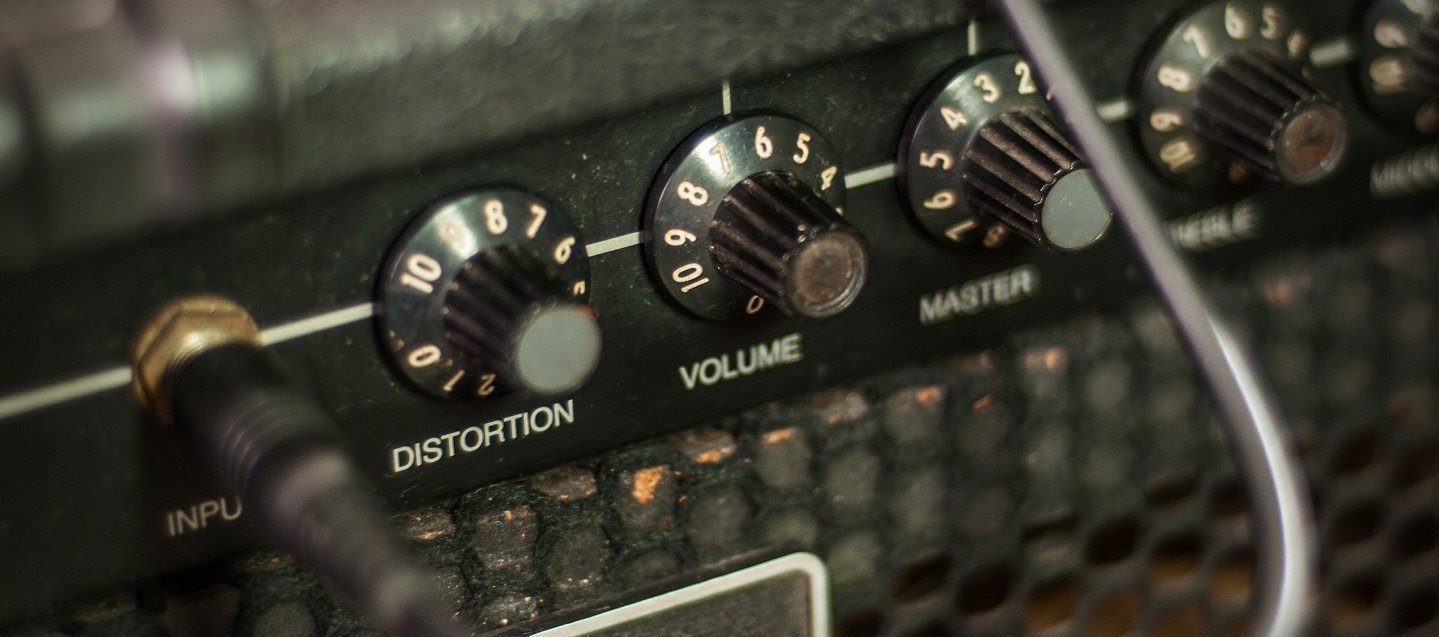Guitar amps are generally divided into two groups, solid state and tube amps. Tube amps are the traditional design using vacuum tubes. They are almost universally used for high end, professional amps.
Solid state amps use transistors in place of the vacuum tubes, which make solid state amps far cheaper and lighter than an equivalent tube amp. As a result, cheaper beginner amps are almost universally solid state amps. The reason tubes are preferred is due to the sound they produce. Overdrive and distortion are such common terms for guitarists that many don’t pause to think what they mean.
Originally, these tones were produced by overdriving the tubes in an amp beyond their designed specifications, which resulted in a distorted signal. Due to how solid state amps work, they cannot be used in the same manner. Solid state amps can only mimic the overdrive and distortion of a tube amp, but with only limited success.
However, not all amps in the beginner price range are solid state amps. The Blackheart Killer Ant breaks the mold and delivers a tube amp at a price that is only a little higher than the average solid state beginner amp. At first glance, the palm sized Killer Ant lacks almost all the features found on its competition, costs slightly more money to buy, and requires a separate amp cabinet. In every respect, it might seem like an overpriced option. However, the tube tone of the Killer Ant more than justifies the added cost. The Killer Ant doesn’t have multiple channels, built in effects, varied tone controls, or other built in features. The Killer Ant produces one good guitar tone, and, at the end of the day, that is what an amp needs to do.
Features
The Blackheart Killer Ant has virtually the lowest amount of features possible for an amp. The only control is a volume knob. The Killer Ant even omits the generally standard bass, mid, and treble tone controls found on almost every other amp. The only other notable feature is that the Killer Ant has 4, 8, and 16 ohm outputs, allowing it to be connected to almost any speaker cabinet on the market.
The Killer Ant is a 1-watt amp. This might sound very low compared to other beginner amps, but this value is a little misleading. While wattage is often used to roughly estimate the volume of the amp, it is not actually a very good figure to use. Different amps use different amounts of power to produce the same volume. There is usually some correlation, but it varies based on how the amp actually works. Tube amps, like the Killer Ant, almost universally have lower wattages than solid state amps. The Killer Ant is loud enough to be used as a practice amp without any volume issues.
Tone
Tone is the real reason why guitarists would consider getting the Blackheart Killer Ant over other beginner amps. The Killer Ant provides a good tone that generally outclasses pretty much any beginner amp on the market. The Killer Ant even outclasses many of the more expensive solid state amps, as well. The Killer Ant does not have a versatile tone, it just makes one very good tone.
The Killer Ant really shines at higher volume levels. The natural overdrive of the Killer Ant sounds extremely good, especially compared to the harsh overdrive tones that usually appear on beginner amps. The Killer Ant has a nice fat tone that does very well for rock guitar and can be well suited for many other styles as well. The cleaner tones the Killer Ant produces at lower volumes are good, but solid state amps usually have little trouble producing decent clean tones. The advantage of the Killer Ant over its competition is definitely more prominent when it is turned up to take advantage of the natural overdrive.
Ease of Use
The lack of features makes the Blackheart Killer Ant extremely easy to use. The only controls are a power switch and a volume knob. While many beginners probably have never had to hook an amp head to a cabinet, this is not a difficult issue on the Killer Ant. All the guitarist has to do is plug the amp cabinet into the matching jack on the back of the Killer Ant. This is not a problem since the matching jack is indicated on the back of the cabinet.
One small issue with use is that the volume control also controls the level of overdrive. This actually isn’t that odd of a design choice, since the original way amps were overdriven was by increasing the volume over the normally designed levels. However, it does mean that guitarists might not be able to get the exact tone they want out of the Killer Ant at the exact volume they want. Overall, this is, at worst, a minor nuisance. Most guitarists probably will not even notice the issue, favoring playing the Killer Ant turned all the way up.
Build
The overall build quality of the Blackheart Killer Ant seems very solid in all respects. It looks good and everything seems to be solidly connected and in place. The Killer Ant is going to be a little more fragile than most of its competition, but this is due to it being a tube amp rather than a solid state amp.
Value
The value of the Blackheart Killer Ant largely revolves on why a guitarist is looking at it. For a beginner amp, it can be one of the best or worst values on the market. One thing to keep in mind is that the Killer Ant is an amp head, which means that it requires a separate cabinet to function. While used amp cabinets can be bought relatively cheap, the Killer Ant is alone is still slightly more expensive than most beginner amps. From a features perspective, the Killer Ant offers very little, while costing more than its competition.
However, the main thing that sets the Killer Ant apart is the fact it is an actual tube amp, not a solid state amp like virtually every beginner amp on the market. The Killer Ant is cheap enough to be used as a beginner amp, even factoring in the extra cost of the cabinet, while still providing a distinct tube amp tone. Other beginner amps can only attempt to model the sound of a tube amp and none of the results are particularly exceptional. While the Killer Ant lacks in features, it is a good value in respect to the actual tone it produces.
Final Impression
The Blackheart Killer Ant does one thing and one thing well. It produces a good, natural overdrive tone that is just not really possible on the solid state amps that make up virtually the entire beginner market. It might not have all the features or bells and whistles of its competitors, but it makes the guitar sound good, which is the main purpose of an amp in the first place. The lack of versatility to the tone and the higher than average price tag mean that the Killer Ant isn’t going to suit everyone, but guitarists that enjoy the tone are going to find it money well spent and most likely won’t even notice the limited amount of features.












Nice reveiw. At first Amp was advertised $159. then, while on the boat from China, it went up $179. I was set on buying it until then. About 18 months later a guitar store in Nashville unloaded them at $139. I thought it was OK, at first, not great. I was playing through cheap speakers /cables. Then, I thought about selling it, until Ebay prices dictated 1/3 loss. I plugged it in and started playing, after going through a boutique phase. Well, this Amp is boutique quality. It’s got an odd bulb, big heavy on/off switch, chicken beak single knob and not two, but 3 output selectors. The Amp is so odd, it’s worth keeping. I was plugging in/out Cabs of another boutique 45W Amp that retails almost $2K. So I A/Bed it. And the Killer Ant has almost same qualtiy tone, minus volume and headroom. I hate turning on my boutique amp, in fear of wearing down the tubes. I only play very low volume anyway. The Ant sits proudly on top of the boutique Amp, and I find myself at home playing it very often through Cascading OD and multi-effects and 4X12 Warehouse Speakers ET/65, Veteran Cab. It does AC/DC to Zep. Doesn’t matter. It’s all good sound, esp through chorus. I tried to swap JJ tubes once, and the originals were actually better. You get a very good low volume bang for the buck. It gets at least 2X loud as a full volume TV set through 4X12. Yeah, it’ll get drowned out by drums, but that’s not what you’re paying for. You pay for an oddball boutique quality Amp head that delivers superior quality low volume tone, at a low price. Yes, it’s Made in China, and it’s taken years, but I’ve gotton over that with it’s oddball nature.